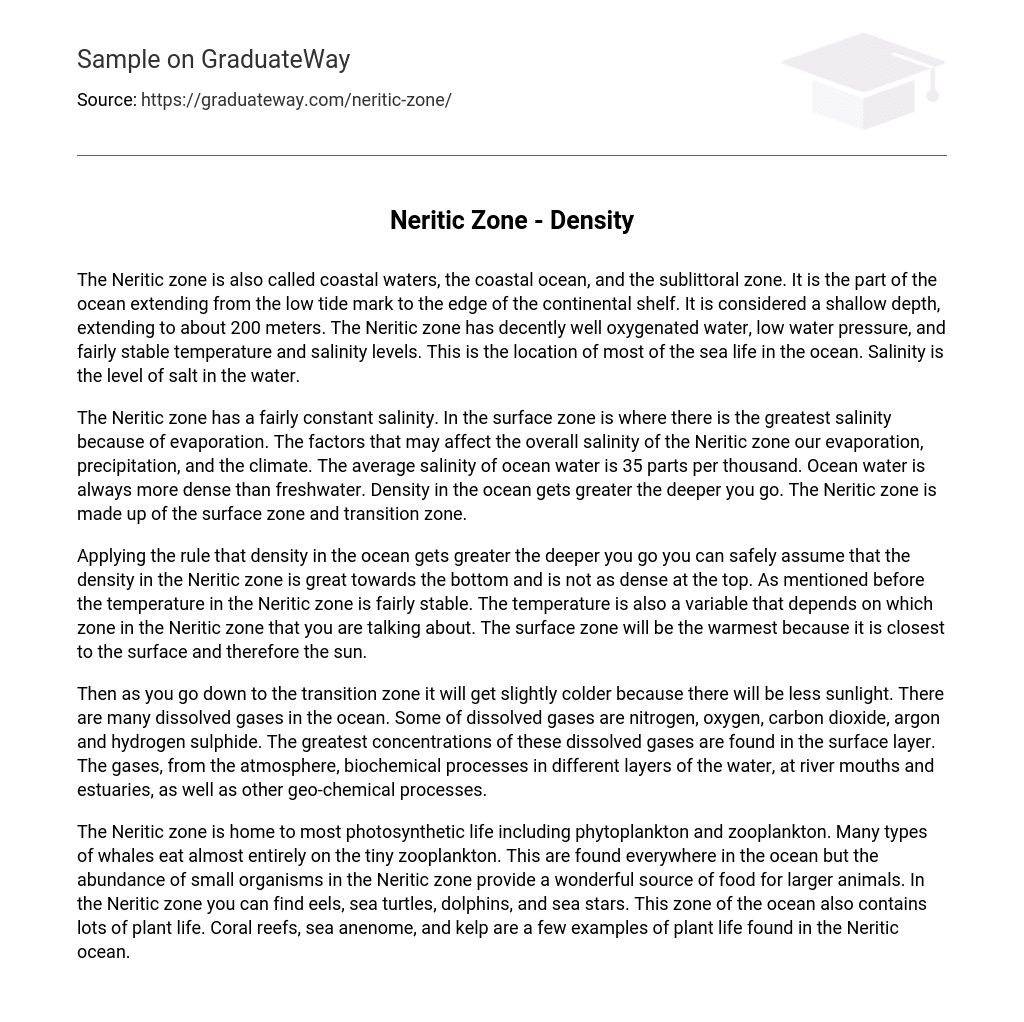The Neritic zone is also called coastal waters, the coastal ocean, and the sublittoral zone. It is the part of the ocean extending from the low tide mark to the edge of the continental shelf. It is considered a shallow depth, extending to about 200 meters. The Neritic zone has decently well oxygenated water, low water pressure, and fairly stable temperature and salinity levels. This is the location of most of the sea life in the ocean. Salinity is the level of salt in the water.
The Neritic zone has a fairly constant salinity. In the surface zone is where there is the greatest salinity because of evaporation. The factors that may affect the overall salinity of the Neritic zone our evaporation, precipitation, and the climate. The average salinity of ocean water is 35 parts per thousand. Ocean water is always more dense than freshwater. Density in the ocean gets greater the deeper you go. The Neritic zone is made up of the surface zone and transition zone.
Applying the rule that density in the ocean gets greater the deeper you go you can safely assume that the density in the Neritic zone is great towards the bottom and is not as dense at the top. As mentioned before the temperature in the Neritic zone is fairly stable. The temperature is also a variable that depends on which zone in the Neritic zone that you are talking about. The surface zone will be the warmest because it is closest to the surface and therefore the sun.
Then as you go down to the transition zone it will get slightly colder because there will be less sunlight. There are many dissolved gases in the ocean. Some of dissolved gases are nitrogen, oxygen, carbon dioxide, argon and hydrogen sulphide. The greatest concentrations of these dissolved gases are found in the surface layer. The gases, from the atmosphere, biochemical processes in different layers of the water, at river mouths and estuaries, as well as other geo-chemical processes.
The Neritic zone is home to most photosynthetic life including phytoplankton and zooplankton. Many types of whales eat almost entirely on the tiny zooplankton. This are found everywhere in the ocean but the abundance of small organisms in the Neritic zone provide a wonderful source of food for larger animals. In the Neritic zone you can find eels, sea turtles, dolphins, and sea stars. This zone of the ocean also contains lots of plant life. Coral reefs, sea anenome, and kelp are a few examples of plant life found in the Neritic ocean.





